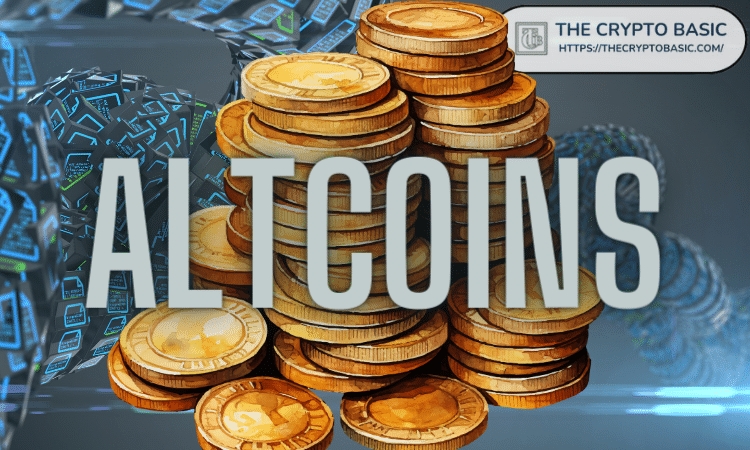Renowned analyst Mike Deutscher has identified altcoins dispersion as a major factor behind the ongoing downtrend, as the top 125 altcoins lose $137 billion in valuation.
The cryptocurrency market is currently experiencing a significant downturn, with Bitcoin’s value plunging to $65,000. This decline has had a profound effect on altcoins.
Notably, data indicates that the market valuation of the top 125 altcoins (TOTAL2) has dropped by $137 billion from $1.185 trillion on June 5 to $1.048 trillion. Amid this turmoil, Mike Deutscher, a seasoned market analyst, has provided an explanation of the causes behind this downward spiral in a recent post on X.
Altcoins Dispersion a Major Factor Behind Ongoing Downtrend
According to Deutscher, a significant issue within the crypto market is the main reason for the underperformance of altcoins in the ongoing market cycle. He identified this flaw as a concept dubbed “altcoin dispersion.”
A MAJOR fundamental flaw in crypto is starting to emerge.
It's the #1 reason why altcoins are underperforming this cycle.
And currently, there seems to be no fix.
I just dug through all the data (what I found was shocking).
🧵: How altcoin dispersion is killing crypto.👇
— Miles Deutscher (@milesdeutscher) June 18, 2024
In his commentary, Deutscher reflected on the state of the market in 2021. During this period, the market thrived with an influx of new liquidity, primarily driven by retail investors. The bullish sentiment was at its peak, and venture capitalists (VCs) responded by investing unprecedented amounts of capital into the crypto space.
Venture capitalists typically invest early in projects, often six months to two years before launch, at lower valuations. This investment helps fund project development, with these VCs providing additional support services.
The first quarter of 2022 marked the highest ever quarter for VC funding, with $12 billion invested, coinciding with the start of the bear market. This influx of capital resulted in a surge of new projects, leading to a threefold increase in the total number of crypto tokens between 2021 and 2022.
However, the market soon faced a series of catastrophic events, starting with the collapse of LUNA and culminating in the downfall of FTX. These events severely impacted the market, prompting projects that had previously raised funds to delay their launches.
Launching during a bear market, characterized by low liquidity and poor sentiment, was seen as a recipe for failure. Consequently, many projects postponed their launches, waiting for more favorable conditions.
An Flood of New Altcoins
By the fourth quarter of 2023, market conditions had improved, prompting a wave of delayed project launches. This trend continued into 2024, with an unprecedented number of new tokens trooping into the market.
Deutscher stressed that over one million new crypto assets have been introduced since April, with half of these being meme coins on Solana. Even excluding smaller meme coins, the number of new tokens is staggering. CoinMarketCap currently tracks over 2.4 million crypto assets.
The flood of new tokens has led to significant supply pressure on the market. This pressure “stacks” over time, with projects from previous years still unlocking their tokens.
There is an estimate of around $150 million to $200 million of additional supply pressure daily. This persistent selling pressure, similar to inflation, reduces the purchasing power of crypto.
Deutscher contended that the crypto market’s version of inflation, driven by altcoin dispersion, is exacerbating the current downturn. This is due to the high frequency of new crypto assets launched, in addition to less new liquidity pumped into the market.
In addition, many new tokens have low fully diluted valuations (FDV) and high float mechanics, further contributing to market instability.
Proposed Solution
To address these issues, Deutscher suggested several measures. He calls for exchanges to ensure there is a better token distribution mechanism and for project teams to prioritize community allocations with larger pools for real users.
• Exchanges could enforce better token distribution
• Teams could prioritise community allocation & bigger pools for genuine users
• Higher % could be unlocked on launch (potentially implementing measures like laddered sell taxes etc. to disincentive dumping).— Miles Deutscher (@milesdeutscher) June 18, 2024
He also recommended unlocking a higher percentage of tokens at launch, potentially implementing measures like laddered sell taxes to discourage dumping.
Further, the analyst emphasized the need for a market friendlier to retail investors to encourage participation. He suggested that exchanges be more pragmatic, balancing new listings with the delisting of inactive projects to free up valuable liquidity.
Ultimately, a more inclusive market benefits all stakeholders, including exchanges, VCs and crypto projects.
Disclaimer: This content is informational and should not be considered financial advice. The views expressed in this article may include the author's personal opinions and do not reflect The Crypto Basic’s opinion. Readers are encouraged to do thorough research before making any investment decisions. The Crypto Basic is not responsible for any financial losses.
-Advertisement-


